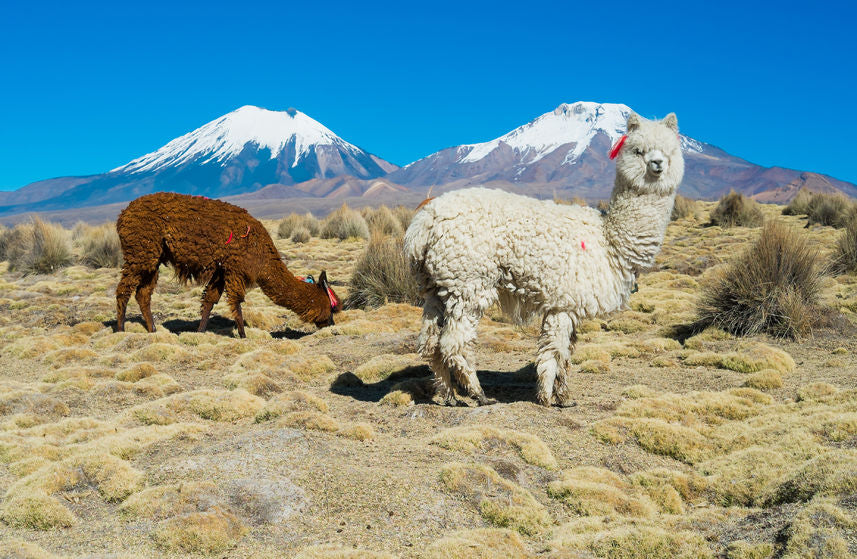Where is Bolivia? How do alpacas live in the Bolivian highlands?
Bolivian highlands are located in the west-central of South America, where alpacas live in a 100% natural environment, with wide pens and where overproduction does not exist. It is so natural that its grasslands do not have automatic irrigation systems. These alpacas have enough space to graze and feed; the smallest farms have at least 20-30 hectares.
When and how are alpacas sheared?
Each alpaca is sheared every two years since they are two years of age.
This procedure is carried out once a year, between October and February, since they are the least cold months, preventing alpacas from freezing. It is also known that when alpaca accumulates a lot of fiber, this can suffocate it and even die.
Normally the farmer shears them by interspersing two groups. In other words, those alpacas who were sheared the previous year will still have to wait until the following year. There are several traditional techniques to shear them, with different mooring practices; from mooring the 4 legs to tie their heads in a corridor.
Any of these millenary techniques last between 15 and 20 minutes per animal. The farmers have the help of experts, who use the most appropriate cutting instruments so that the animals do not suffer pain at any time. It is important to note that there is no mistreatment towards alpacas and they are released immediately after being sheared.
How is alpaca fiber?
When shearing alpaca, different qualities of fleece are obtained. Fleece is the alpaca fiber before being processed and arranged in clews, whose quality varies between: Thick, Standard, Super Fine, Guariso, Baby and Royal. The last two qualities are found in animals in smaller proportion. The youngest (2 years) are considered “baby alpaca” although this sort of fleece is also found in small areas of the most adult alpacas.



